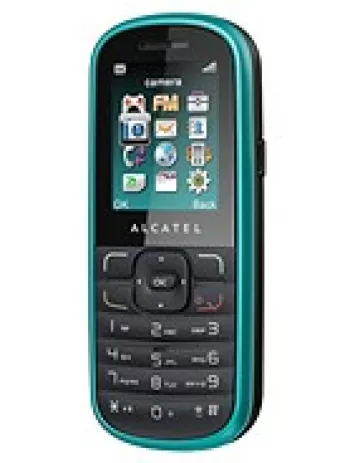
Overview
The Alcatel Idol S was a smartphone released by Alcatel in December 2013. It was known for its slim design, reasonable performance, and affordability in the mid-range segment of smartphones. Though it is now discontinued, the device boasted several features that made it appealing to a considerable segment of users during its time.
Network
The Alcatel Idol S supported multiple network technologies including GSM, HSPA, and LTE. Specifically, it supported 2G bands (GSM 850 / 900 / 1800 / 1900), 3G bands (HSDPA 850 / 900 / 2100), and 4G LTE on bands 1, 3, 7, 8, and 20. The device offered HSPA speeds of 42.2/5.76 Mbps and LTE Cat3 speeds of up to 100/50 Mbps, enabling reasonably fast mobile data connectivity for its time.
Design and Build
The Idol S showcased a sleek and lightweight design, measuring 133.5 x 66.8 x 7.4 mm and weighing just 110 grams. It featured a Micro-SIM card slot. The build quality was solid, and its thin profile of 7.4 mm made it one of the more portable devices available in 2013. The thin and elegant body was complemented by color options like Slate, Fresh Rose, and Cherry Red, offering users a bit of personal flair.
Display
The device came with a 4.7-inch IPS LCD display, offering a resolution of 720 x 1280 pixels with a 16:9 aspect ratio. The resulting pixel density of about 312 ppi ensured decent clarity and sharpness in visuals. Moreover, the display was protected by Asahi Dragontrail Glass and featured an oleophobic coating to reduce fingerprint smudges, which helped maintain screen clarity and hygiene.
Platform
The Alcatel Idol S was powered by the Mediatek MT6577 chipset, a 40 nm dual-core processor running at 1.2 GHz Cortex-A9. It also incorporated the PowerVR SGX531u GPU which handled graphics processing tasks. The device shipped with Android 4.2 (Jelly Bean), offering a smooth and straightforward user experience with access to a wide range of applications and features common to the Android ecosystem at that time.
Memory and Storage
For memory, the Idol S included 1GB of RAM, which was typical for mid-range phones of the era, providing adequate performance for multitasking and basic application operations. It offered internal storage of 4GB, which was relatively limited, but this could be expanded via a dedicated microSDHC card slot, allowing users to add more storage for their media and apps.
Camera
The device sported an 8 MP rear camera with autofocus capabilities. It included useful features like LED flash, panorama, and HDR, enabling users to capture enhanced photos in various conditions. It also provided 1080p video recording at 30fps, offering fairly high-quality video capture for a device of its class. On the front, there was a 1.3 MP camera intended for basic selfie-taking and video calls.
Sound and Multimedia
The Alcatel Idol S featured a loudspeaker and had a 3.5mm audio jack, allowing users to easily connect headphones or external speakers for enhanced audio experiences. Moreover, it supported stereo FM radio with RDS, catering to fans of live radio broadcasts.
Connectivity
In terms of connectivity, the Idol S included Wi-Fi 802.11 a/b/g/n with dual-band support, Wi-Fi Direct, DLNA, and hotspot functionality, facilitating versatile wireless communication options. Bluetooth 4.0 with A2DP allowed seamless pairing with other Bluetooth-enabled devices. It also came equipped with GPS, ensuring accurate location services. Its physical connectivity was supported by a microUSB 2.0 port.
Sensors
The device hosted a range of sensors such as an accelerometer, proximity sensor, and compass, each contributing to enhanced functionality and user experience, from screen auto-rotation to navigation assistance.
Battery Life
The Idol S featured a non-removable Li-Ion battery with a capacity of 2000 mAh. While modest by today’s standards, it provided adequate power, delivering up to 700 hours of standby time on 2G, up to 400 hours on 3G, and talk time of up to 6 hours on 2G or up to 8 hours 30 minutes on 3G networks, depending on usage and network conditions.
Conclusion
The Alcatel Idol S was a notable entry in the mid-range smartphone market when launched. While not cutting-edge by modern standards, it provided a well-rounded set of features for its time. From its aesthetic design and decent display quality to its connectivity options and adequate performance, the Idol S served as a reliable device for users seeking functionality without breaking the bank.
Key Features of Alcatel Idol S
- Supports GSM, HSPA, and LTE technologies for reliable connectivity.
- Slim and lightweight design with dimensions of 133.5 x 66.8 x 7.4 mm and a weight of 110 g.
- Durable IPS LCD display with 4.7 inches screen size and a resolution of 720 x 1280 pixels, protected by Asahi Dragontrail Glass and an oleophobic coating.
- Powered by a Dual-core 1.2 GHz Cortex-A9 processor and Mediatek MT6577 chipset for smooth performance.
- Expandable storage with a microSDHC card slot, in addition to the internal 4GB storage and 1GB RAM.
- Impressive 8 MP autofocus main camera with LED flash, panorama, and HDR features, capable of recording 1080p video at 30fps.
- Equipped with Wi-Fi 802.11 a/b/g/n, Bluetooth 4.0, and GPS for comprehensive connectivity options.
- Provides up to 700 hours standby time on 2G and up to 400 hours on 3G networks with a non-removable Li-Ion 2000 mAh battery.
- Available in attractive colors: Slate, Fresh Rose, and Cherry Red.
Alcatel Idol S Disadvantages
- Outdated Operating System: Ships with Android 4.2 (Jelly Bean), which is now considered obsolete.
- Limited Internal Storage: Only 4GB of internal storage, which may not be sufficient for modern apps and media.
- Low RAM: 1GB RAM may lead to slower performance and limited multitasking capabilities.
- Mediocre Processor: Dual-core 1.2 GHz Cortex-A9 is outdated and underpowered for modern applications.
- Poor Front Camera: Only 1.3 MP, not suitable for high-quality selfies.
- Non-removable Battery: Users cannot replace the battery easily, which may affect the device's longevity.
- No NFC Support: Lacks NFC, limiting options for mobile payments and other contactless technology uses.
- Discontinued: No official support or updates are available as the device is discontinued.


View Also
More Phones
All Rights Reserved +14268 Phones © Mobilawy 2025

























